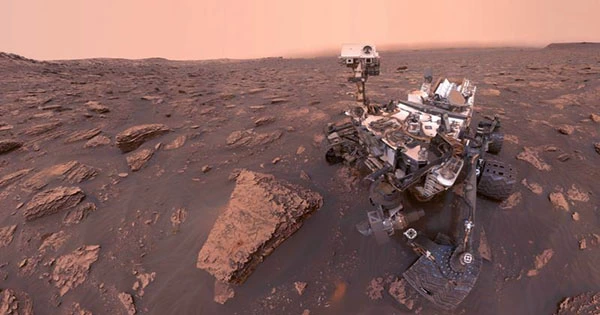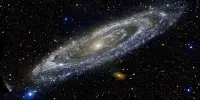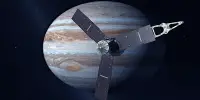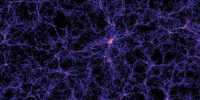We’ve been used to the Martian rovers capturing the occasional selfie through moving arms and sophisticated digital stitching since Curiosity landed on Mars over a decade ago. For orbiters orbiting the Red Planet, the situation is different. However, the Chinese National Space Administration (CNSA) has lately demonstrated that the orbiters may snap as well. The orbiter Tianwen-1, which successfully delivered the Zhurong rover to Mars and is now orbiting the planet, has deployed a tiny camera gadget.
This resulted in a spectacular “selfie” of Tianwen-1, which was then sent back to the orbiter over Wi-Fi, where it was forwarded to Earth. The golden spacecraft is seen in full, including its antennas and solar panels, the magnificence of the Red Planet, with a partial glimpse of the Martian northern ice cap, can be seen behind it. It is not the first time the orbiter has taken a photo using a deployable camera. It accomplished the same thing in deep space on its journey to Mars. However, considering the wonderful setting, it cannot match the most recent one.
Since May, the Tianwen-1 mission, who includes a lander and a rover, has been studying the surface of Mars. Zhurong also took lovely images of itself and the lander using a deployable wireless camera. Tianwen-1’s orbiter was meant to examine Mars’ visible geology from a high altitude and precisely detect the planet’s feeble magnetic field. One of the tools in its arsenal is a high-resolution camera that can capture photos with a resolution of up to 2 meters (6.6 ft), this is not as excellent as NASA’s HiRISE from the Mars Reconnaissance Orbiter, but it is still impressive.
Tianwen-1 began its orbit farther away than the NASA orbiter, approaching the ground at a distance of 400 kilometers (250 miles) during its closest approach, but it adjusted it in November. In its 7 hours and 5 minutes orbit around Mars, Tianwen-1 comes as near as 256 kilometers (165 miles) and as distant as 10,700 kilometers (6,500 miles).
The altered celestial course permits the orbiter to begin working on its scientific objectives while continuing to receive data from Zhurong, who is still operating far beyond the intended 90-day mission. The mission’s name, Tianwen, is derived from ancient Chinese poetry by Qu Yuan (340-278 BCE). It translates to “Questions to the Heavens,” an appropriate name for a mission that will reveal fresh insights into Mars while also attempting to solve some of the many unsolved riddles.
















